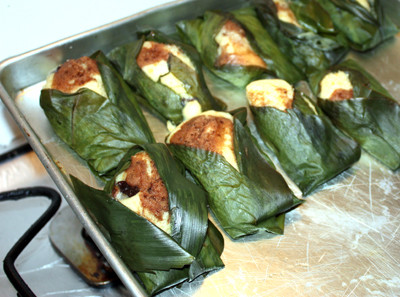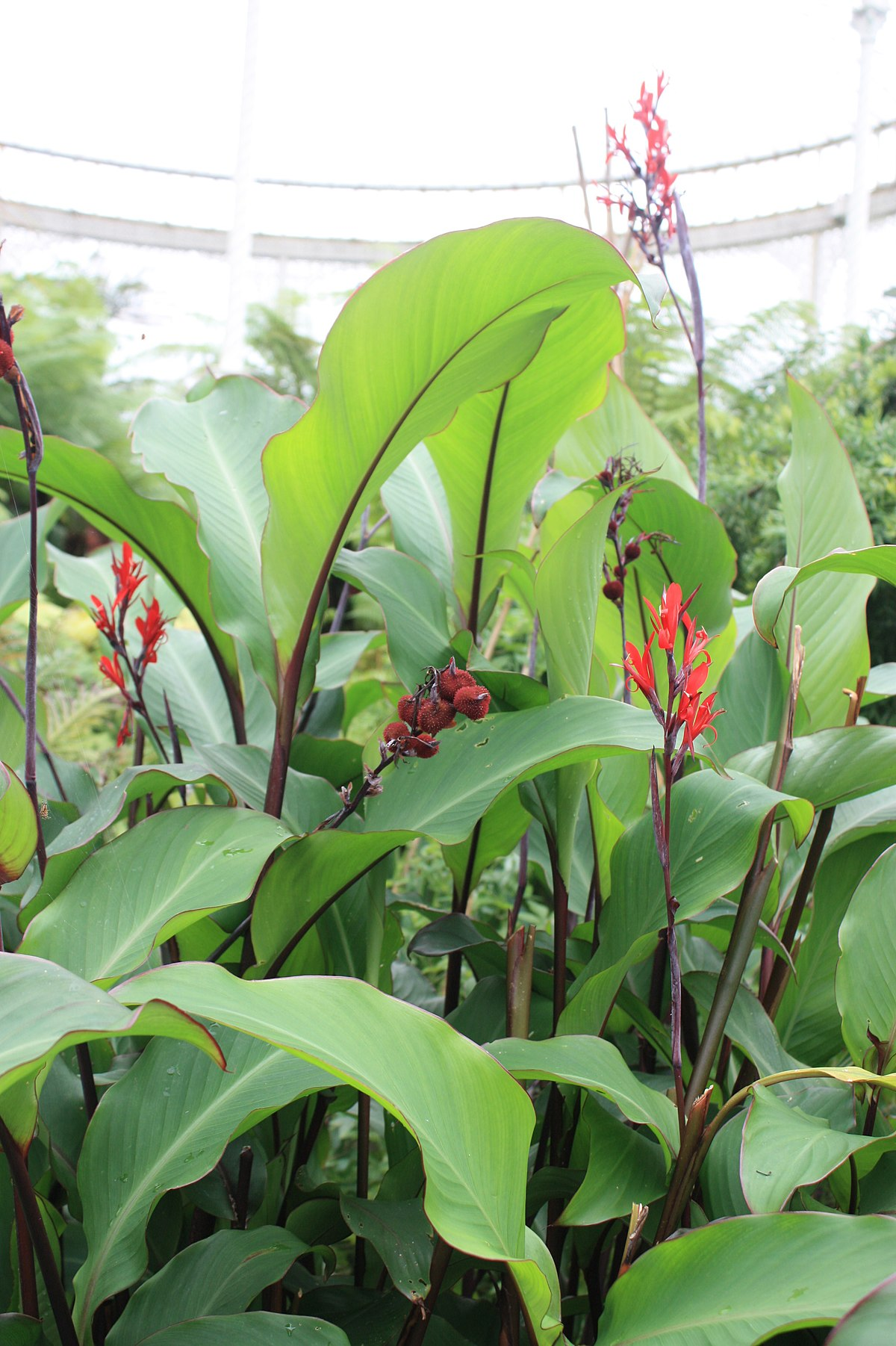Achira
Scientific Name: Canna edulis
Climate: Hot, temperate, cold
Plant Description: It has green leaves sometimes with red and purple stems. It grows from one to three meters high. Achira is a large perennial, which lives more than two years, with many crowded rhizomes.
Cultivation: To reproduce, divide the rhizomes and leave each one with at least three sprouts. When planting the rhizomes, space them between 45-60 cm apart. It is not recommended to plant the seeds because the product can be unreliable. Try to keep the area free of weeds during the first few months.
In hot climate areas, the roots are harvested six to ten months after planting. In colder areas, the roots are harvested when the plants die from frost. The most tender rhizomes should be used before they become too hard. Tender rhizomes can be easily removed from established colonies.
Achira is very tolerant to a variety of soil types. Although native to cold highland tropical areas, it can grow in cold or hot climates. After a heavy frost, the leaves might die but it will sprout again. The soil should remain moist, but well-drained - it likes boggy areas. It can grow in full-sun or partial shade.
Uses: The root of achira is a very good food source. It can be eaten raw or cooked. Once cooked it becomes translucent and  sweet, and even sweeter after a few weeks of storage. It has high potassium and carbohydrate content, and is relatively high in protein. The tender shoots can also make good feed for animals. The young leaves are sometimes used to wrap tamales.
sweet, and even sweeter after a few weeks of storage. It has high potassium and carbohydrate content, and is relatively high in protein. The tender shoots can also make good feed for animals. The young leaves are sometimes used to wrap tamales.
Pests and Diseases: Canna virus is the most common problem. This causes yellow and red spots on the leaves but can be prevented if the plants are grown in direct sunlight.
References:
https://www.cultivariable.com/instructions/andean-roots-tubers/how-to-grow-achira/#perennial
https://www.cultivariable.com/instructions/andean-roots-tubers/how-to-grow-achira/#pests
En Espanol: Achira

